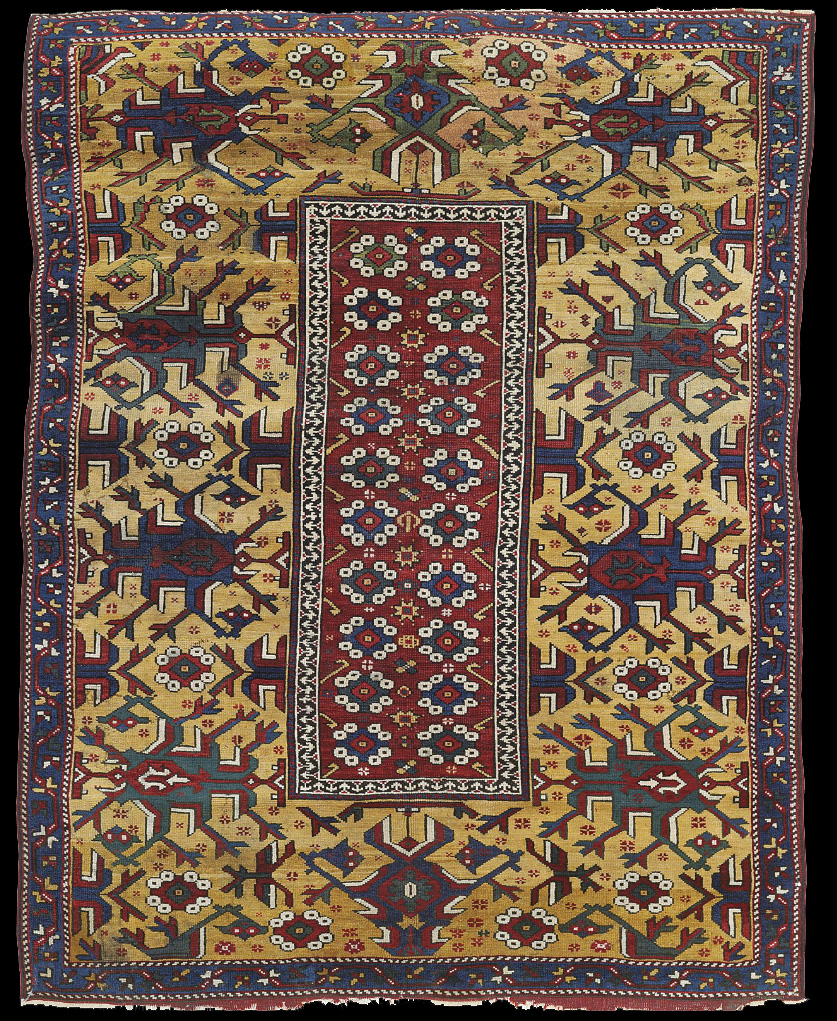|
Price Realized £22,500 ($36,225)
Estimate
£20,000 - £30,000
($32,260 - $48,390)
Sale Information
Christies SALE 7960 —
ORIENTAL RUGS AND CARPETS
INCLUDING TURKMEN WEAVINGS FROM THE COLLECTION OF ERIK RISMAN
5 April
2011
London, King Street
LOT NOTES
217- A BERGAMA RUG
WEST ANATOLIA, 2ND HALF 18TH CENTURY
Good pile with localised areas of light wear, a few touches of
repiling, a few repairs mostly in the border, a couple of stains, ends
frayed
6ft.11in. x 5ft.5in. (211cm. x 165cm.)
Lot Notes
Only
four examples of this type of Bergama rug are currently known. One is
illustrated in Heinrich Jacoby, Eine Sammlung Orientalischer Teppiche,
Leipzig, 1923, p.91, pl.25, and is now in the Brooklyn Museum. A second,
even more similar rug is published by Eberhart Herrmann, Seltene
Orientteppiche, vol.X, München, 1988, p.44-45, pl.16. With the latter
piece our rug shares the little hooks leading from the inner border into
the field, the scattered minor geometric polychrome motifs in the field as
well as the stylised minute blossoms spread all over the broad yellow
border.
The fourth example, once in the McMullan Collection and now in
the Metropolitan Museum of Art, New York, was, together with the
Jacoby/Brooklyn rug, the only known piece until the mid 1960s. It shows
the same features in a slight variation (Joseph V. McMullan, Islamic
Carpets, New York, 1965, pp.332-333, pl.114). The proportion of field and
border are different partly due to the inserted small medallion around
which the flowerheads are grouped in rows and the slightly wider inner
guard stripe. The stylised angular palmettes in the border are not as
widely proportioned as in the other three examples leaving more space
between the various motifs. The confrontation of the palmettes in the
three main rugs considerably increases the tension in the design. |


.jpg)
.jpg)
.jpg)
.jpg)